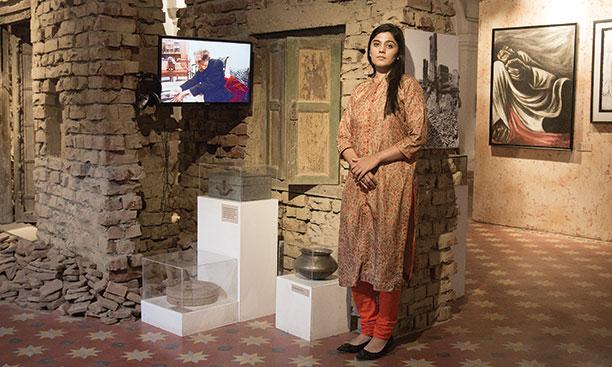
Mallika Ahluwalia ’05, a Woodrow Wilson School major from New Delhi, India, was working for the Bill and Melinda Gates Foundation in her home country when she and a relative had a realization: There was no memorial dedicated to the Partition of India and Pakistan, an enormous human migration that cost millions of lives. Today, she is CEO and curator for the Partition Museum in Amritsar, India, a space dedicated to the millions affected by the partition. Their stories are told through artifacts, audio-visual exhibits, letters, and other ephemera. The museum, which opened last August, has already had more than 100,000 visitors. Ahluwalia spoke to PAW about her journey.
How did you come to land at Princeton?
I realized that I wanted to pursue a college education that would really push me intellectually, so I started exploring universities in the United States. Princeton stood out for me for many reasons — I liked that it was a smaller school, and of course, its no-loan financial-aid policy was vital. I came to the U.S. for the first time for the international student pre-orientation in August 2001. In India, degrees are very straightjacketed: If you’re studying science, you don’t get exposure to history and vice versa. So the liberal arts education made me feel like a kid in a candy store.
How did the museum come to be?
In early 2015, a few of us who came from families affected by the Partition had the stark realization that we were approaching 70 years since Partition happened, and yet there was no museum or memorial anywhere in the world to remember all the millions who had been impacted. Three of my four grandparents were affected by Partition, so this was a very personal journey for me; my maternal grandmother’s family lost almost all their possessions.
In the beginning, this was a passion project for me; I never thought it was something I would do full time. I was volunteering while maintaining my day job, and I really thought it might take us 10 years. But the museum idea got so much support that the project started moving very rapidly. In mid-2016, I realized that I would need to do this full time. I took on the role of CEO and curator in fall 2016, and there has been no looking back. I am not a museologist, a curator, or a historian, so there was a lot of learning on the job and sleepless nights while working toward our opening. I feel really grateful that fate led me in this direction and gave me the opportunity to help create something so needed.
What don’t most Westerners understand about the Partition of India?
In the West, Partition is at most known as the split of undivided India into India and Pakistan in 1947, but what is not understood is the enormous humanitarian crisis that accompanied this split. The fact that this remains the largest mass migration in human history would be a surprise to many, I think. Estimates on the number of people who had to flee their homes go up to 18 million, estimates on the number who died go up to 2 million — a massive tragedy at a human level.
Try to imagine it: Most of those who fled were very poor, rural, agricultural families who had to walk often tens of miles in the scorching heat and pouring rain of an Indian summer. They had literally no links or knowledge of or relations in the place that they were going to and their entire journey was plagued by the threat of attack or abduction. There was no shelter, food, water, or sanitation on the way. So many died in the sectarian violence of partition, but many also died from cholera, starvation, or sheer exhaustion. Partition was particularly difficult for women — there were abductions and rapes and a lot of corresponding honor killings.
But the museum also highlights how even in the middle of all this mayhem, there were people who exercised humanity and helped others escape to safety. The Partition Museum pays a tribute to the enormous resilience of the survivors who rebuilt their lives and the subcontinent even after having lost so much.
The museum website says that Partition’s humanitarian consequences have not been discussed widely. Why might those conversations be starting now?
My view is that in the immediate aftermath of partition, given the terrible violence that most had witnessed, it was too raw to remember. But also, given the deep economic loss due to losing one’s home and livelihoods, there was a sense that one had to just move on and ensure a better life for one’s children however one could.
Now almost 70 years have passed, this is the last generation with direct memories of partition. This generation wants their story to be heard; their children want their parents’ sacrifices to be known. When we interview them, they often say that a burden is lifting off them that finally there is a space that acknowledges what they went through.
